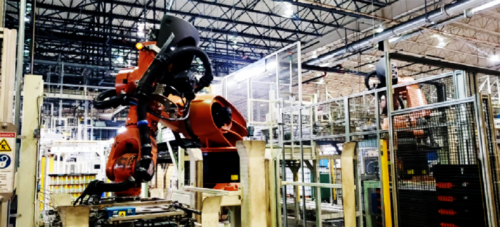Free-swinging robotic leg shows natural motion
Shane Migliore, NSF Graduate Research Fellow, Georgia Institute of Technology is developing a robotic leg with free-swinging movement for performing neuromuscular experiments.
Ventura, CA —Shane Migliore, NSF Graduate Research Fellow, Georgia Institute of Technology is developing a robotic leg with free-swinging movement for performing neuromuscular experiments. The key is a brush motor (TGB2011 from ThinGap Corporation ) that reduces parasitic drag.
“Because we want natural motion we cannot allow the leg to move to discrete points along its path,” says Shane Migliore, NSF Graduate Research Fellow at the Georgia Institute of Technology. “We needed smooth movement, very low output inertia, and zero cogging. The motor [we are using] doesn’t have the cogging and hysteresis problems of equivalent strength motors,”
The TGB2011 brush motor delivers 300 oz-in. of peak torque and 460 W of continuous shaft power, yet weighs only 33 oz. Its patented technology replaces the iron core and wire windings of conventional motors with a precision machined copper sheet, virtually eliminating hysteresis, cogging, and iron losses, the company says, while substantially reducing the impact of eddy currents and back EMF.
The company says their patented freestanding coil technology does not use laminations for structural support that interfere with the magnetic field in conventional motors. This allows the stator to reside in a very thin magnetic gap. In the ThinGap motor, the stator is stationary and the permanent magnets rotate, so the entire magnetic circuit rotates.
See also: “ Slotless, brushless PM motor is efficient .”
—Edited by C.G. Masi , senior editor, Control Engineering
Do you have experience and expertise with the topics mentioned in this content? You should consider contributing to our CFE Media editorial team and getting the recognition you and your company deserve. Click here to start this process.





